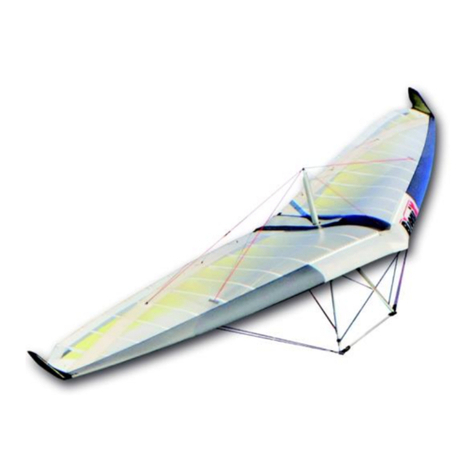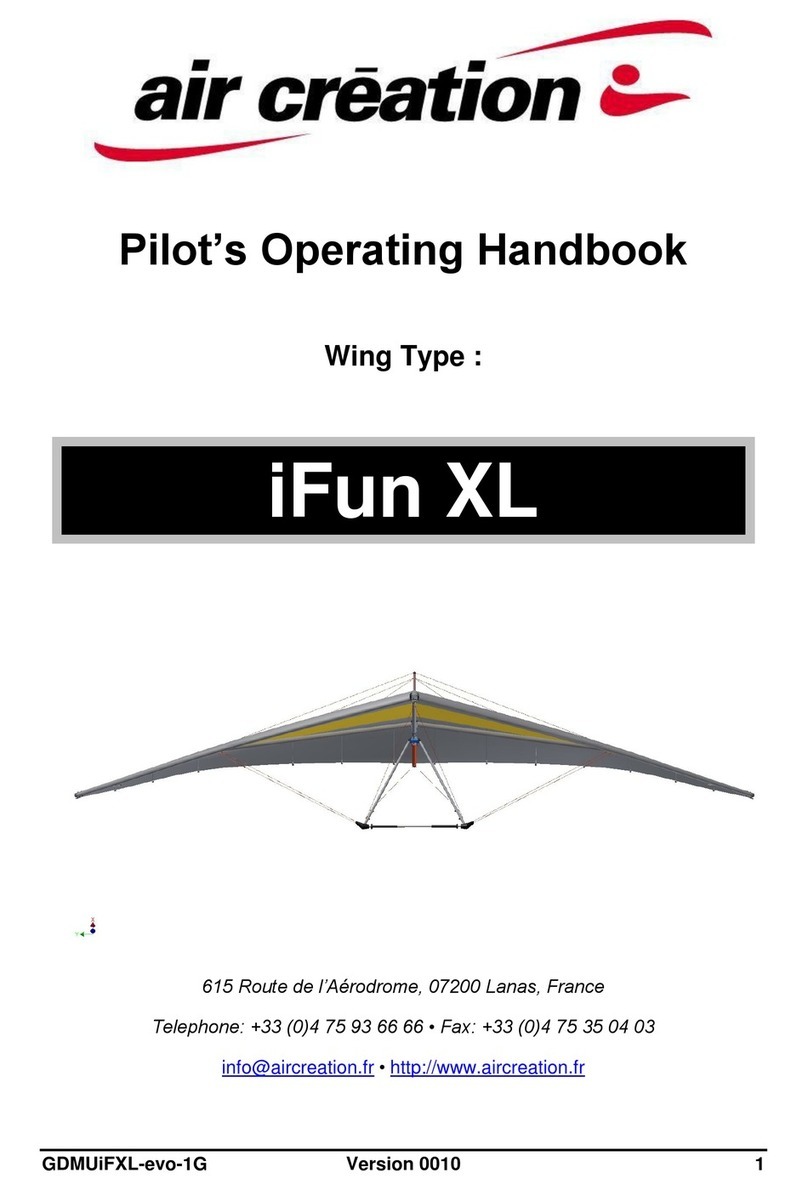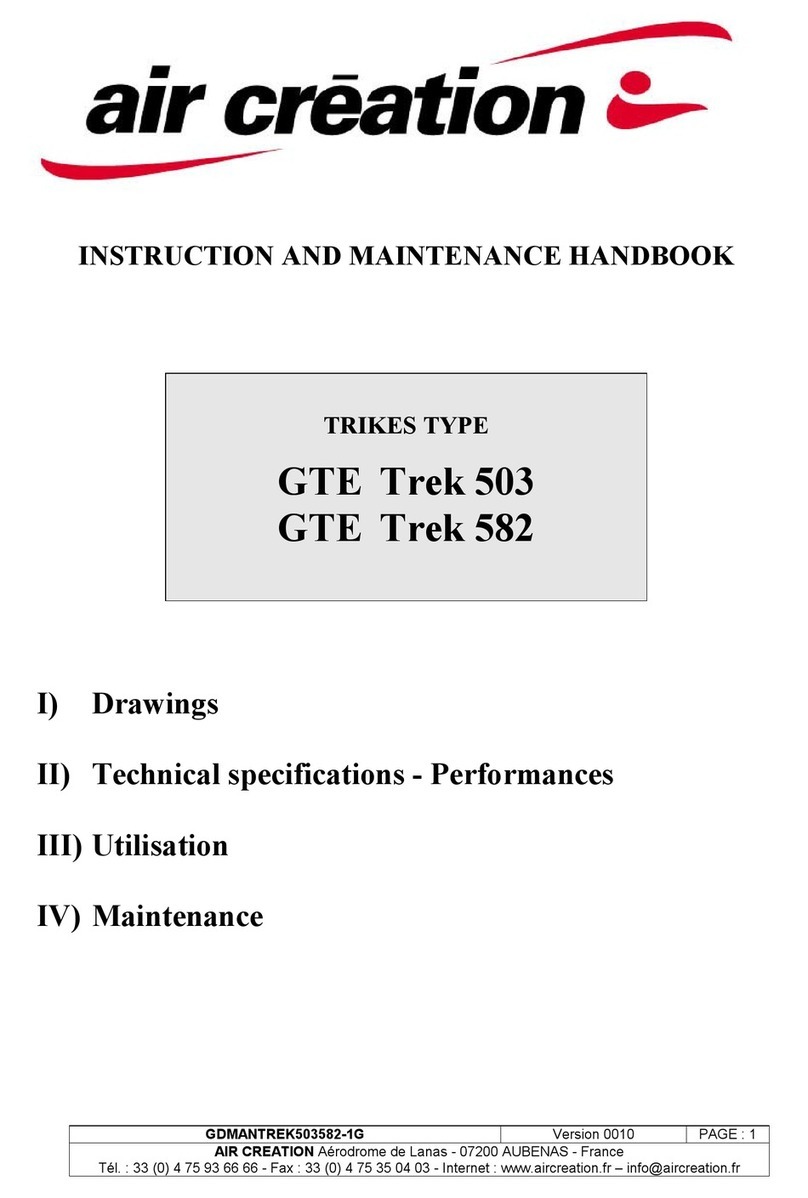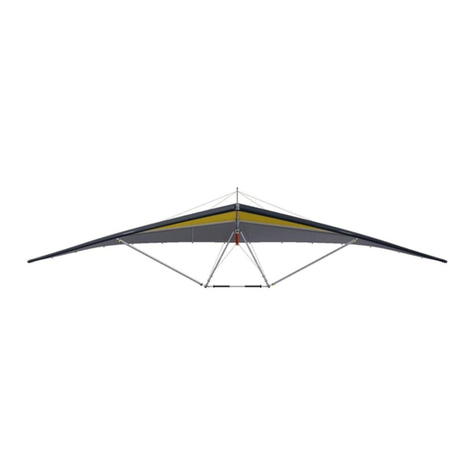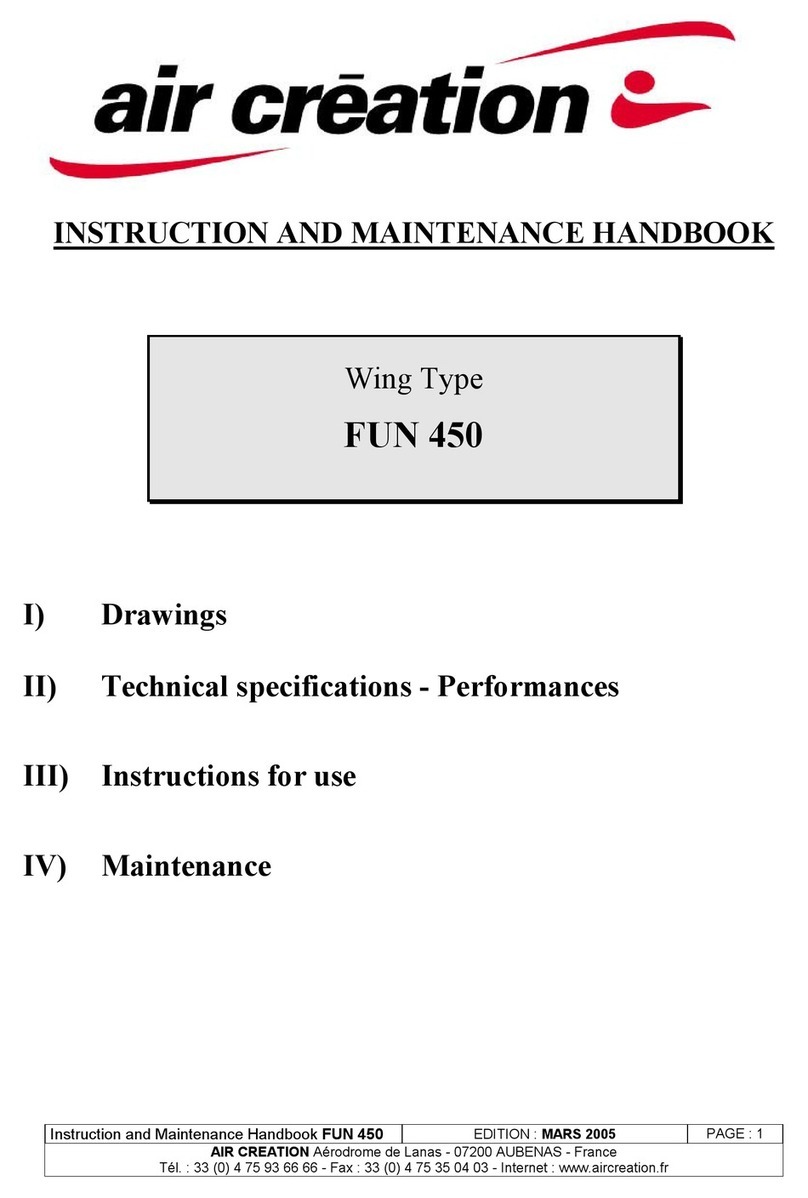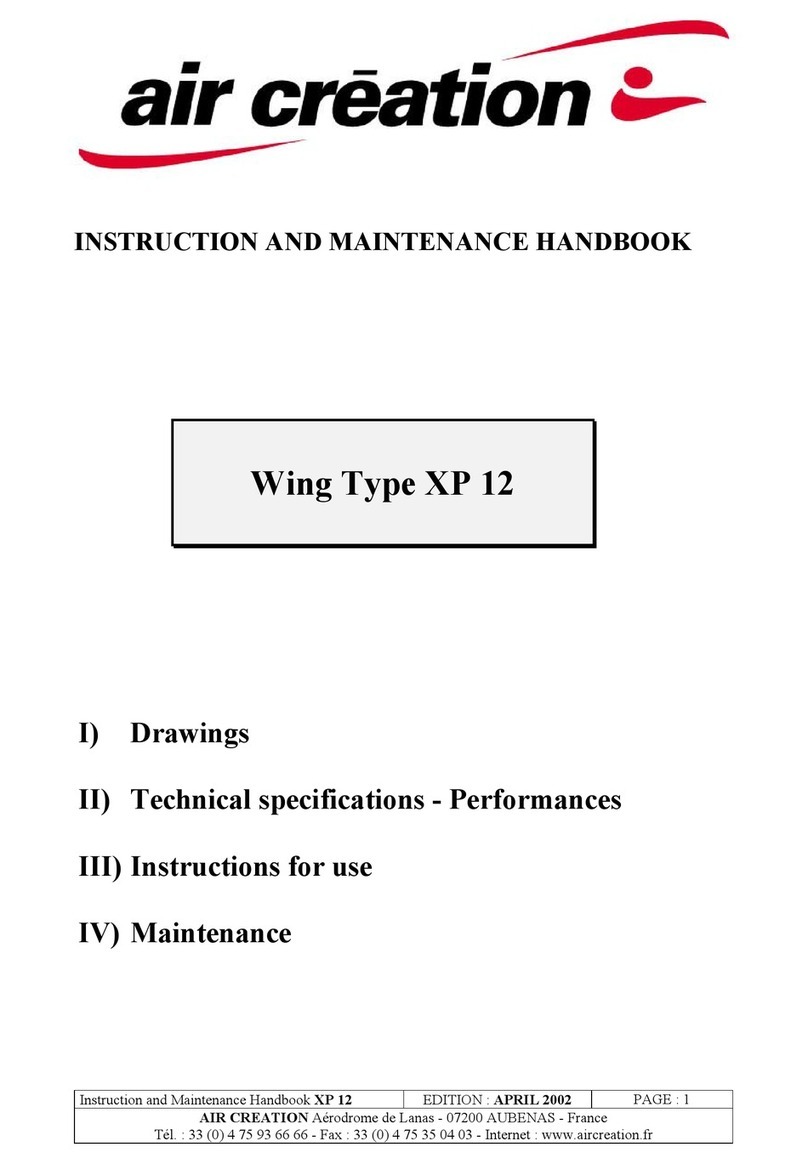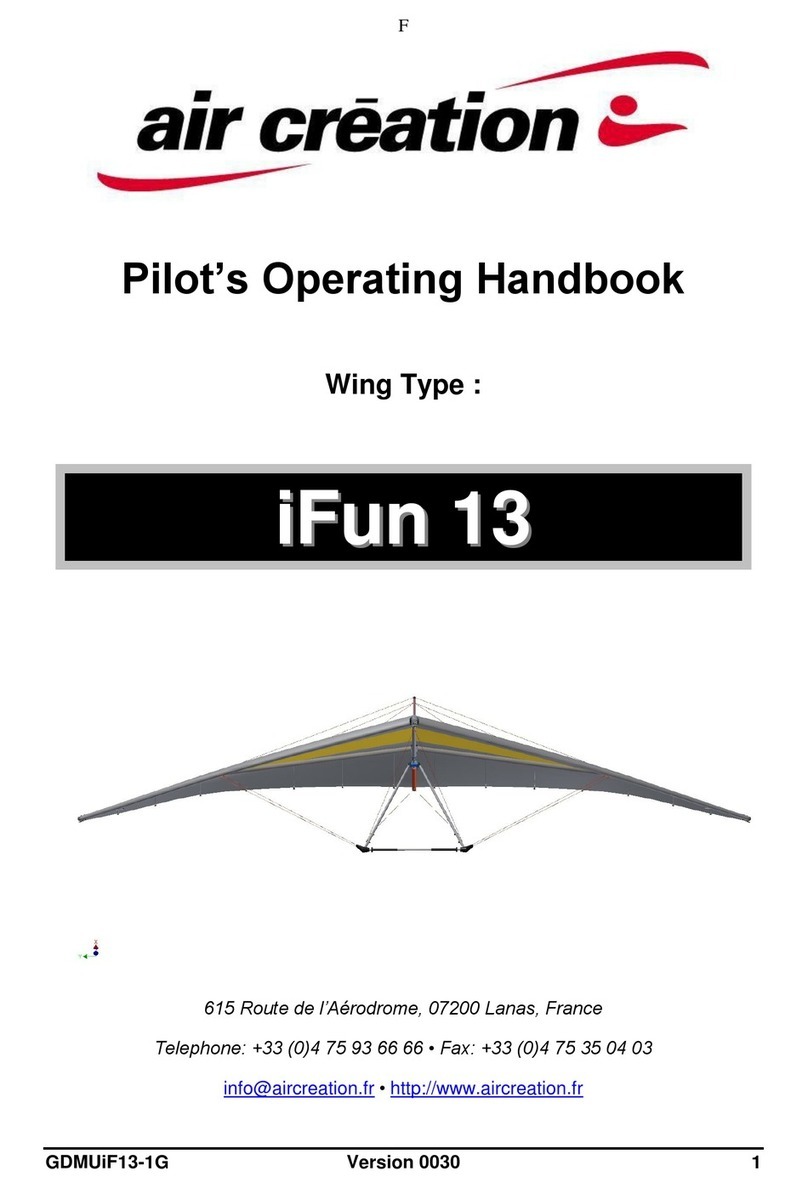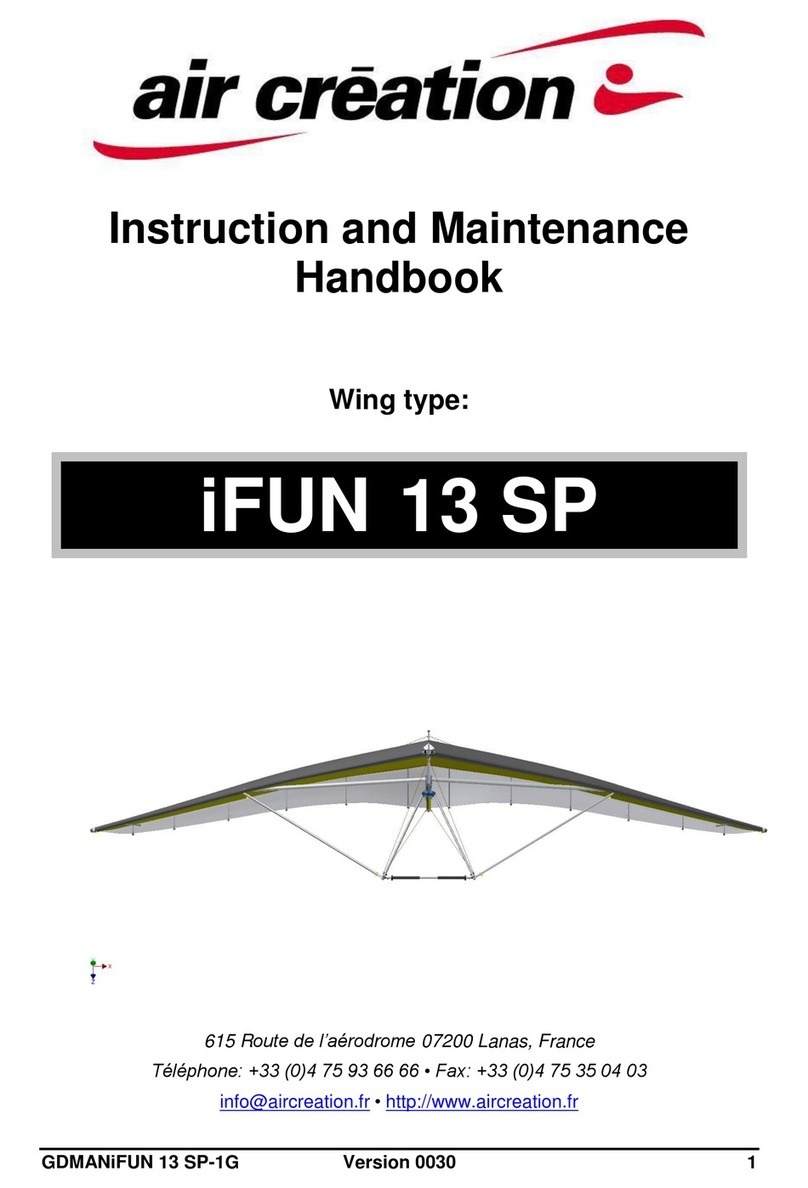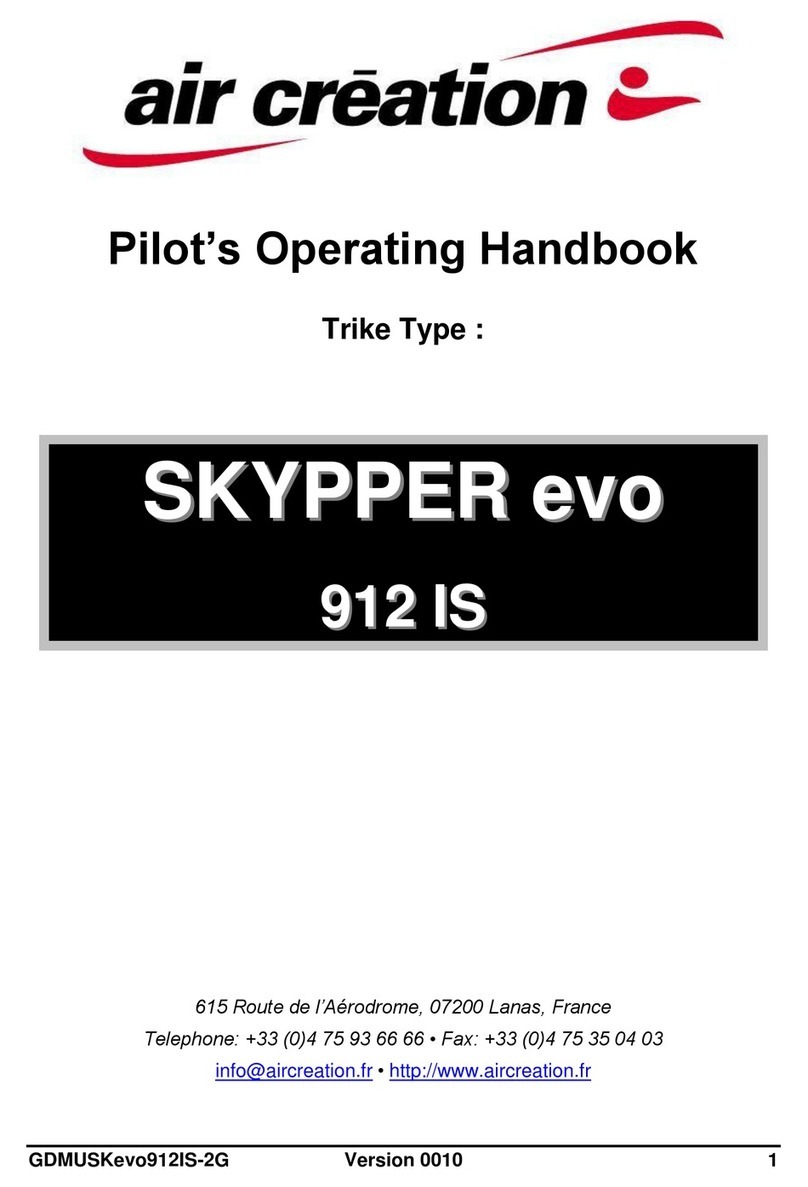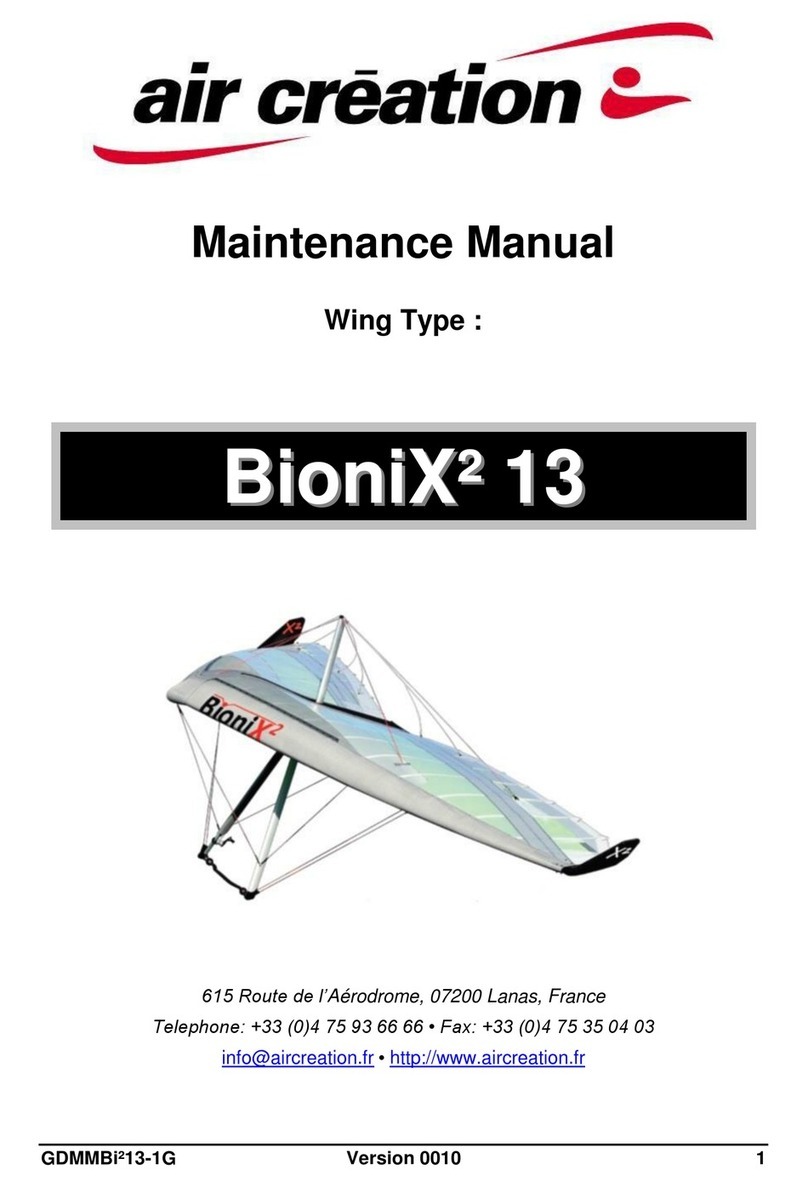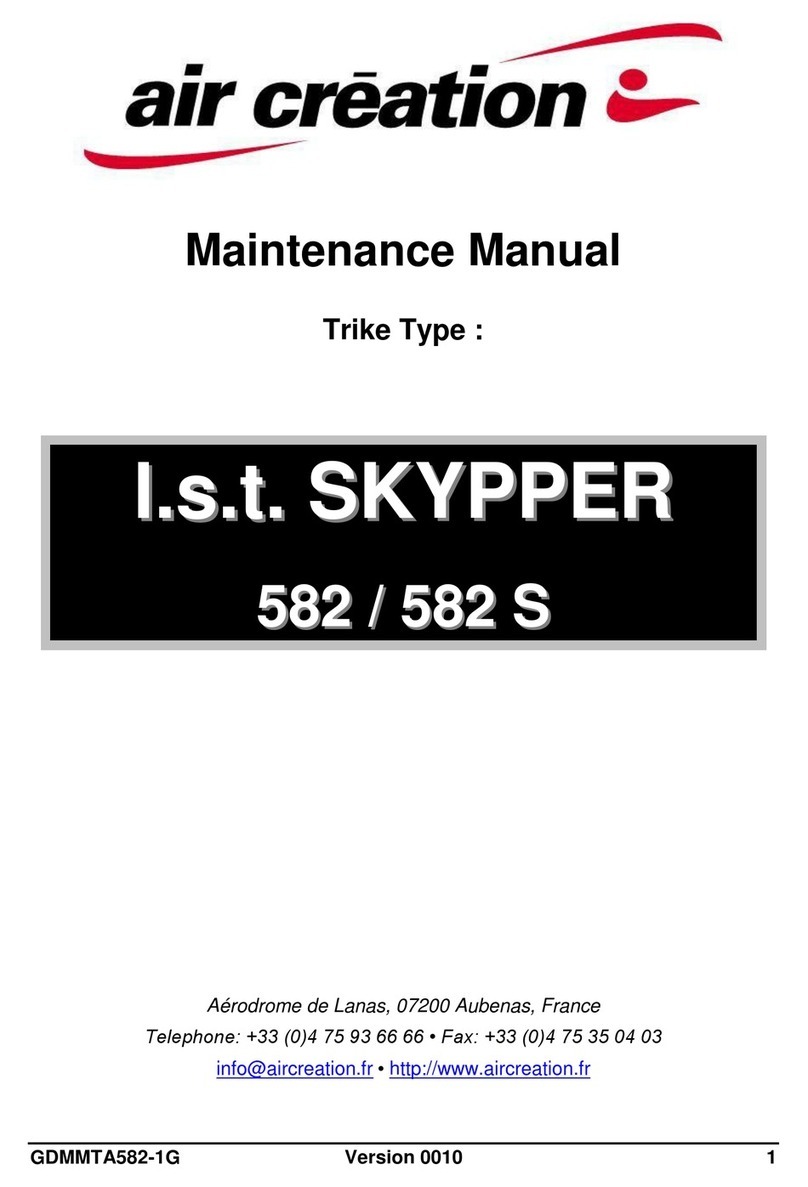
Instruction and Maintenance Handbook GTE - CLIPPER EDITION : JUNE 2005 PAGE : 10
AIR CREATION Aérodrome de Lanas - 07200 AUBENAS - France
Tél. : 33 (0) 4 75 93 66 66 - Fax : 33 (0) 4 75 35 04 03 - Internet : www.aircreation.fr – info@aircreation.fr
4) The "CLIPPER" Integral fairing
When equipped with integral fairing, luggage container and streamlined struts, the GTE trike is named
"CLIPPER". This model is very comfortable for long trips, the windshield giving a very efficient
protection for the pilot due to the deflection of air flow while at high speed operations.
The glide ratio is increased by 0.5 point and the max. speed by 3 mph (5 km/hour or 2.7 Kts). Landing
distance is increased by 15 ft (5 m) due to its higher performance. The maximum useful load is 570 lbs
(258 kg). The side bags can carry 2x 11 lbs (2 x 5 kg) of material; luggage container allows 33 lbs (15
kg).
The procedure for rigging the wing changes with the Clipper trike. The windshield must be, at first,
dismantled with a coin turning the Nylon screws a 1/4 turn. Once the wing is fixed on the upper beam,
lift it from the front of the trike which should be held by someone else by the hub of the propeller or
locked with a strap rolled around the front wheel to the ground. This will prevent the trike from moving
backwards or falling over. Once the locking screws of the front tube and the safety screws of the upper
beam are set on the engine mount, the windshield can be refitted.
5) Electric starter
This option reduces by 23 lbs (10.5 kg) the useful load of the GTE trikes. The starter is coupled to the
gearbox reduction and the battery is set under the second occupant’s seat. The starting procedure
described under paragraph II d) is different. A three positions key contactor is either housed in the panel
instrument (Clipper) or in the instrument console (GTE). The first catch switches on the circuit supplied
by the battery (green light on); the second catch releases the starter. The switch breaker, fitted up behind
the hand throttle, sets the contact of the ignition coils- "ON" = DOWN and "OFF" = UP.
To start, carry out the engine and trike preparation (prime fuel, starter, parking brake) and check that no
one is standing close to the propeller, set the ignition switch to ON (switch breaker pointing down),
turn the key in the first catch (red light is working), then in the second catch till the engine starts. Do not
hold the key in this position, release it in order to be in the first position and push choke down as soon as
you obtain a steady running. To control the good functioning of the dual ignition system, use the 3
positions switch set beneath the hand throttle box.
To stop the engine, set the ignition switch to off, and then the battery switch to off. Remove the key so
that rotation of propeller does not occur accidentally.
Starting may be facilitated, in case of difficulties by allowing the battery to rest 30 seconds before
attempting another start; do not try until it weakens entirely. Remember: the manual starter remains fully
efficient if the battery runs down.
6) Towing system
The towing system reduces by 2.2 lbs (1 kg) the useful load of the GTE trikes.
It allows streamers, advertising signs and hang glider towing.
Pulling the lever, set in the left lower part of the frame seat, backward releases the towing cable.
7) Floats
An option proposes an installation kit for a pair of floats. A specific manual describes the assembling.
Only the FUN 450, MILD 16, KISS 450 and XP 17 wings fit for this particular use in respect to their
low minimum speeds. We recommend to practice only on lakes with soft wind regarding the high
position of the centre of gravity and problems of corroding in sea areas.
The option weight, 50 kg (110 lbs.), reduces as much the useful load of the GTE trikes and limits the
possibilities of assembling other optional equipment in order to respect the authorized maximum
weight.
